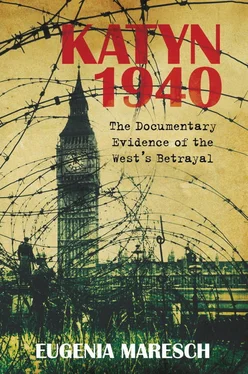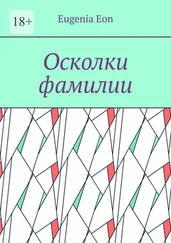The remaining part of the said paragraph is completely false and would not convince anyone. Concerning the second evacuation to Persia, it should be remembered that for four months the Soviet Government steadily refused to accede to this evacuation, although on their part, literally nothing had been done to arm the remaining 44,000. The Soviet authorities even went so far as to inform our [No.30] Military Mission in Moscow that the evacuation bases at Pahlevi [port] in northern Persia should be shut down as no further evacuation would take place (telegram addressed to Troopers at the Military Mission in Moscow No 6132 dated 30 VI 1942).
The Soviet authorities were not able to give any justification for their refusal to transfer the Polish army to a place where the troops could have been armed and equipped. As it was becoming increasingly obvious to all the Allies that this solution was the only possible one, we decided to become involved. Quite unexpectedly, on 27 July, without any explanations, the Soviet Government consented to the evacuation.
Pt. 4. The Polish Government, whilst considering it impossible to restore the Polish soldiers in Russia to a state of physical fitness and to equip and arm them, was now making an effort to transfer these troops to a place where all this could be done. In this endeavour the Polish Government wanted to help the Allies. The Polish Government was following, to the best of its understanding, the intentions of the Polish Soviet agreement: ‘the creation of a Polish army to fight by the side of Russia and of the Allies against Germany’ (see pt.1 of the Soviet note).
The question of further recruitment in Russia
The refusal demonstrates the disposition of the Soviet Government towards Poland. This refusal is expressed clearly in the Soviet note. It is contrary to the interests of the Allies. It is difficult to believe that not sending one Polish infantry division of 11,000 soldiers (even if said division were fully prepared for fighting) to the Russian front could become the cause of an international misunderstanding, as is actually the case.
If anyone is unconvinced, I stress the point again:
a. Did the Soviet Government attach any real importance to the immediate forwarding of the 5th Division to the front?
b. Was the 5th Division effectively armed and equipped?
It will perhaps be sufficient to quote here some of the conversation between General Anders and Stalin that took place on the 18. III. 1942: discussion of the matter of reducing the quantity of food rations (the Soviet Government had fixed the limit of rations to 20,000 soldiers) and of transferring half of the army to Persia, a logical consequence of that reduction, and lastly, on the matter of the part to be played by the remaining army in Russia. Stalin in conclusion said: ‘All right, I consent to assign 44,000 rations. This quantity will be sufficient for three divisions. You will have time enough for drilling, we do not insist on your speedy appearance on the front. It will be better for you to start when we are nearer the Polish frontiers. You should have the honour to enter Polish land first.’
At the end of the conversation, General Anders said to Stalin: ‘To save time I should like to discuss all the technical details with General [Aleksei] Panfilov if you authorise him to do this.’ Stalin replied ‘Good, these matters will be settled by General Panfilov.’ On the next day, that is 19 March, General Anders met with General Panfilov (Head of the Russian General Staff) and during the discussion on the evacuation and on the equipment of the troops remaining in Russia, General Panfilov said ‘Tomorrow we will arrange for the completion of the armament of the 5th Division and the furnishing of arms also to the 6th Division.’
Pt. 5. I hope that in the name of truth the above facts are sufficient to frustrate the attempt made in the Soviet note to give a completely false picture…
One could ask here what is behind this attitude of the Soviet Government. As already underlined in my previous reports, the Soviet Government had never fulfilled the agreement signed with Poland, neither from the military point of view nor in those matters that concern the civilian population. Far from helping in the formation of a strong Polish Army, the Soviet Government tended to divide it. In the first place the initial 70,000 have been divided in two parts. When such a situation could no longer be maintained, the Soviet Government cut away a great number of Polish soldiers from the Army in Iraq.
There are no reasons to refuse these soldiers the opportunity to enlist in the army. On the contrary the Polish army needs them badly and the Polish Government demands them. In this matter the Polish Government looks for our help.
L R Hulls
Professor Stanisław Swianiewicz’ Declaration
From the beginning of November 1939 until 29 April 1940, I was a prisoner of war in Kozelsk camp. From the beginning of April, the camp was slowly liquidated by removing groups of people 200 to 300 strong to an unknown destination. The camp authorities tantalised us for some time that soon we were to be sent home. The group I was assigned to was the last one to leave.
On 29 IV 1940, we were loaded into railway carriages adapted to carry prisoners [ Stolypinki ]. [28] Pyotr Stolypin (1862–1911) Russian Minister of Internal Affairs, was instrumental in repressing the revolutionary reactions of 1905–1907; assassinated in Kiev. Movement of thousands of prisoners required suitable transportation and passenger coaches with compartments were specially adapted for this purpose and nicknamed Stolypinki . The compartments had no windows and up to 14 people would be crammed in. The entrance had a reinforced iron grate, which could be opened only from the outside. There were small observation windows only on the corridor side, where armed guards were strategically positioned. In post Revolution times, such wagons were frequently seen coupled onto the normal passenger trains.
The walls were covered with messages, something like: ‘returning home is a lie, they are taking us to another camp.’ In the morning of 30 IV 1940, we passed Smolensk, and a dozen or so kilometres beyond Smolensk we stopped. It appeared that we were to detrain. Presently an NKVD officer came in with information that I was to be taken out of the convoy and placed separately in another railway compartment. From the narrow top slit of the compartment I could observe the area, which was well guarded by the NKVD . My compatriots were unloaded and put into buses with blackened windows. The bus would return empty to pick up others after an interval of about half an hour. From this scene I gathered that my colleagues were being taken to another camp not far from the railway station. After this movement of men had finished, I was taken separately by car to Smolensk prison and soon afterwards I was transported to Moscow.
From that moment I have lost all contact with my comrades in distress with whom I stayed in Kozelsk camp, with one exception, that is in February 1941 while in Butyrki prison in Moscow, I met Captain [Janusz J.] Makarczyński of DOK ( Dowództwo Okręgu Korpusu Lublin – General Staff, Lublin Corps), who was deported from Kozelsk camp on his own, as far as I remember, before April 1940.
During my stay in various prisons and GULags, I used to hear fragments of information about the Polish PoWs in Northern Russia:
1. Towards the end of 1940, in the Lubyanka prison, a Russian prisoner had told me that previously, he met and sat in prison with a Polish NCO who was brought from Komi GULag , where in 1940, he worked on road repairs and said that conditions were bearable.
2. In March 1941 I met another Russian from Kotlas camp, who in the summer of 1940 worked in Uhta in the Komi region, extracting radium. He too, saw a large group of about 200 PoWs, marching in a northeastern direction. He was told that all of them were Polish officers.
Читать дальше












